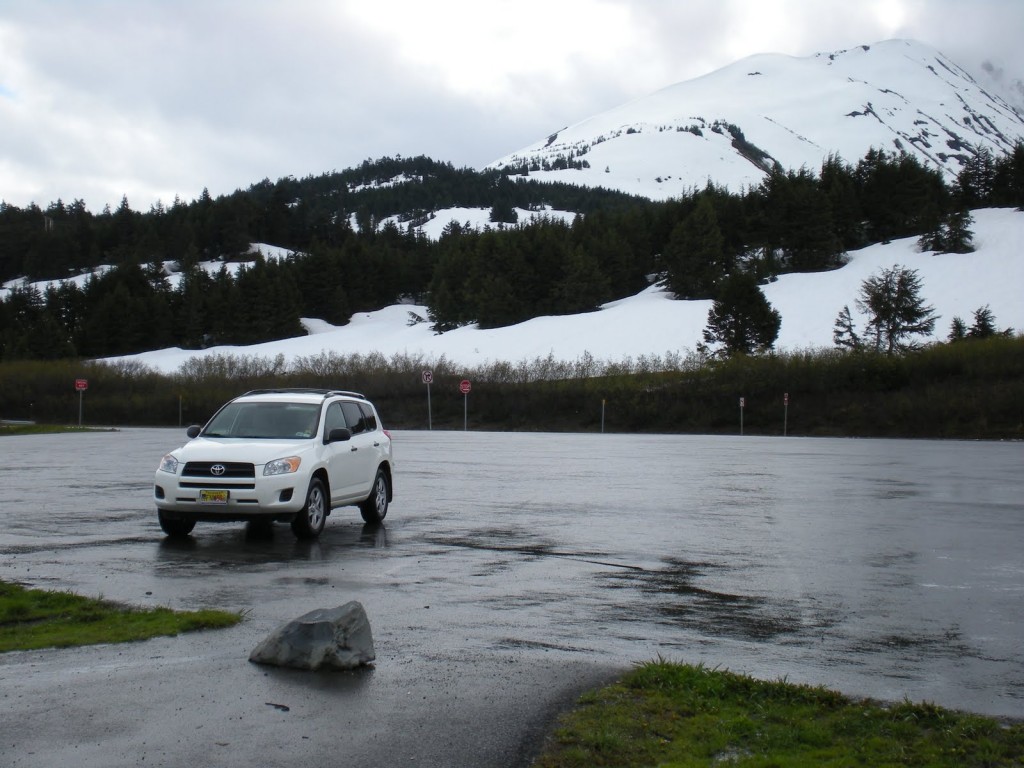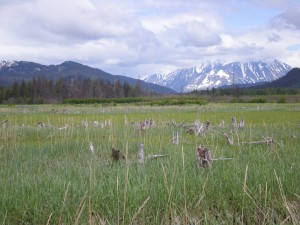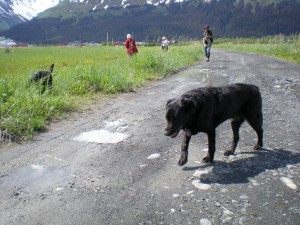Being an Expedition to Seward
Yesterday was an early start for the animal behavior group. We had a two and a half hour drive to Seward and Resurrection Bay planned to catch some fish! Along the way, we stopped many times to take pictures of beautiful Cook Inlet and the mountains.
As we drove it began to get colder. We must have been getting higher into the mountains, because there was snow everywhere. Snow. In June.

When we finally arrived in Seward we had to do a bit of off-road driving to get to the lakes. Ponds, more like. We were looking at a large group of ponds in the middle of a large muddy field filled with knee-high grass. My boots and pants were covered in mud and pollen after walking around. The scenery was great though, even though we had to listen to the sounds of seagulls and crows screaming at each other.
 After lunch we got to work. Traps were laid to catch fish for our crosses and the equipment to measure color was set up. Lily manned the color station while the rest of us patrolled the edges of the pond, nets in hand, searching for courting and parental males. When the sun came out from behind the clouds, this was an easy task; the pond was shallow and the water clear, and in the sunlight we could see straight to the bottom. The males were brightly-colored and most were guarding nests built into the muskeg-y bottom. Watching them was a fascinating experience. Reading about courtship behavior is one thing. It’s quite another to see it in action, to watch the males chase off rival males, to see the males and females dance about each other, to observe how diligently the males guard their nests and just-hatched fry. Watching multiples males and multiple interactions on a large scale was somewhat dizzying, but gave me a new appreciation for the stickleback mating process.
After lunch we got to work. Traps were laid to catch fish for our crosses and the equipment to measure color was set up. Lily manned the color station while the rest of us patrolled the edges of the pond, nets in hand, searching for courting and parental males. When the sun came out from behind the clouds, this was an easy task; the pond was shallow and the water clear, and in the sunlight we could see straight to the bottom. The males were brightly-colored and most were guarding nests built into the muskeg-y bottom. Watching them was a fascinating experience. Reading about courtship behavior is one thing. It’s quite another to see it in action, to watch the males chase off rival males, to see the males and females dance about each other, to observe how diligently the males guard their nests and just-hatched fry. Watching multiples males and multiple interactions on a large scale was somewhat dizzying, but gave me a new appreciation for the stickleback mating process.
During our day we had a visitor! A woman walking her dogs saw us gathering specimens and asked about the threespine stickleback. She was treated to the full explanation of our purpose and the evolutionary significance of the fish. She seemed quite interested. It’s nice to know that locals want to learn more about the work we do here.

There’s also nothing quite like cold pizza for lunch during field work. Mmm-mmm.